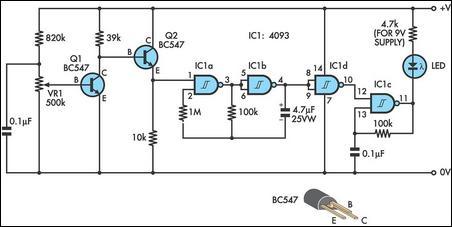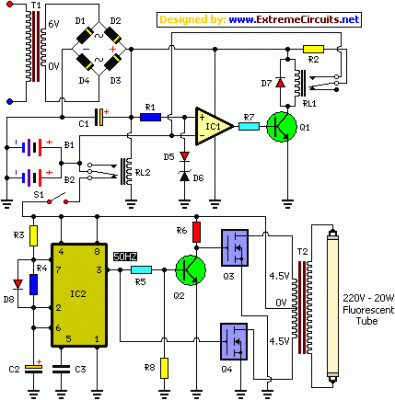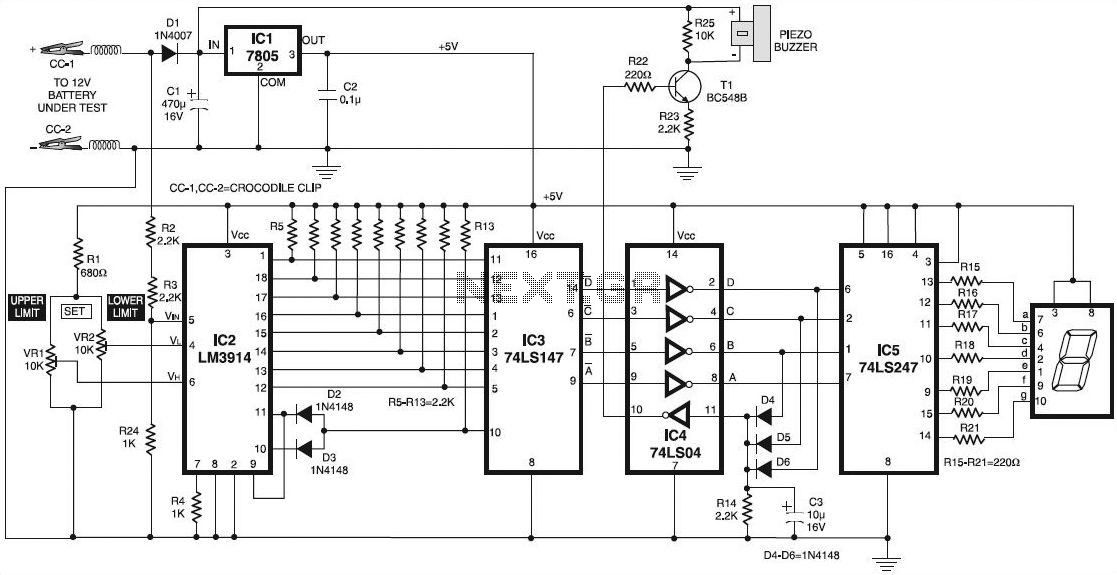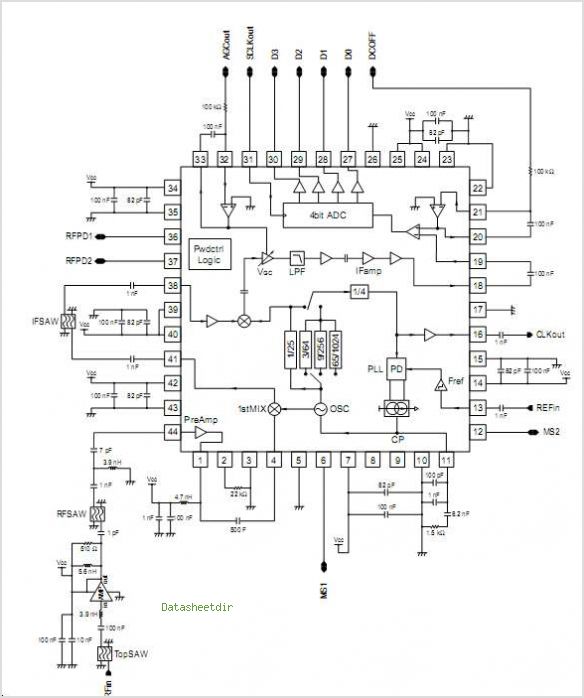
Low Cost Battery Condition Indicator

This design integrates power-on and low-battery indication features, capable of operating with any battery voltage up to 15V. It exhibits a very low current drain of 2mA or less.
The circuit design incorporates a power-on indicator that activates when the device is powered, providing a visual cue to the user. This is typically achieved using a light-emitting diode (LED) connected in series with a current-limiting resistor. The choice of resistor value is critical to ensure that the LED operates within its specified current rating, thus preventing damage and ensuring longevity.
Additionally, the low-battery indication feature is designed to monitor the battery voltage continuously. When the battery voltage drops below a predetermined threshold, the circuit activates another LED or an alternative signaling device to alert the user of the low battery condition. This can be accomplished using a voltage divider network and a comparator circuit, which compares the battery voltage against a reference voltage. If the battery voltage falls below the reference, the comparator output changes state, turning on the low-battery indicator.
The overall design is optimized for low power consumption, ensuring that the circuit draws no more than 2mA of current during operation. This is particularly important in battery-powered applications where extended battery life is a priority. Various components such as low-power operational amplifiers or comparators can be selected to achieve this low current drain, contributing to the efficiency of the design.
The circuit can be powered by a wide range of battery voltages up to 15V, making it versatile for various applications. Careful selection of components and configuration of the circuit will ensure reliable performance across different battery types and conditions.This design combines power-on and low-battery indication, can operate with any battery voltage up to 15V, has very low current drain (2mA or less) and cos.. 🔗 External reference
The circuit design incorporates a power-on indicator that activates when the device is powered, providing a visual cue to the user. This is typically achieved using a light-emitting diode (LED) connected in series with a current-limiting resistor. The choice of resistor value is critical to ensure that the LED operates within its specified current rating, thus preventing damage and ensuring longevity.
Additionally, the low-battery indication feature is designed to monitor the battery voltage continuously. When the battery voltage drops below a predetermined threshold, the circuit activates another LED or an alternative signaling device to alert the user of the low battery condition. This can be accomplished using a voltage divider network and a comparator circuit, which compares the battery voltage against a reference voltage. If the battery voltage falls below the reference, the comparator output changes state, turning on the low-battery indicator.
The overall design is optimized for low power consumption, ensuring that the circuit draws no more than 2mA of current during operation. This is particularly important in battery-powered applications where extended battery life is a priority. Various components such as low-power operational amplifiers or comparators can be selected to achieve this low current drain, contributing to the efficiency of the design.
The circuit can be powered by a wide range of battery voltages up to 15V, making it versatile for various applications. Careful selection of components and configuration of the circuit will ensure reliable performance across different battery types and conditions.This design combines power-on and low-battery indication, can operate with any battery voltage up to 15V, has very low current drain (2mA or less) and cos.. 🔗 External reference





